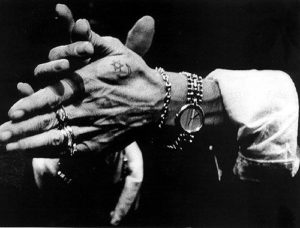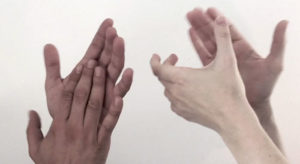 Chicago’s Flamenco Festival. I haven’t been to a festival event in years.
Chicago’s Flamenco Festival. I haven’t been to a festival event in years.
It takes place annually, usually around the end of February, beginning of March – when everyone is more than tired of winter’s gray skies and evenings spent watching Netflix at home.
The festival features wonderful music and dance performed by some of the best in the world and is sponsored by the Cervantes Institute, an organization that promotes Spanish language and culture.
When a couple friends asked me to join them to see La Chimi dance, a San Diego native, currently based in Seville, I couldn’t refuse.
I remembered how, years ago, when I vacationed in Spain, my partner and I caught a couple sets of gypsy style flamenco in a Sacramonte cave taverna on the outskirts of Grenada. It was a wonderful night of passionate singing, stomping and strumming.
La Chimi (Lakshmi Basile) and ensemble of Alejandro El Gambimbas (lead singer), Bruno Serrano (singer and percussion) and Jose Manuel (guitarist) – in a very simple and modern setting, a mostly bare stage with three chairs and microphones in a small auditorium – brought me back to the caves in Andulasia.
So generous and unfiltered in their passion and energy, it was obvious that they enjoyed performing, but more fundamentally, they felt connected to the music they were making. Not improvisational the same way a jazz quartet might run through Stella by Starlight or another classic ballad, yet they worked within a structure AND were very much in the moment.
After a particularly energetic series of staccato impressions the dancer made on the wood floor or a virtuoso arpeggio from the guitar, making you wonder if such a sound could be created by a man who had only five fingers on each hand (like you and me), the ensemble would shout “Joaleee!!” Ah-lay, like olé on steroids.
And the crowd would echo, “Joaleee!!”
My friend, sitting next to me, who is much more left-brained than I am, nudged me and commented something along the lines of “Wouldn’t you love to know what they’re singing?”
Rapt as I was in the performance, I didn’t really care. I felt beauty in the depth of their feelings and how fully they expressed themselves; also in how each artist respected each other. I was conscious that they wanted what they did to blend into something greater.
Curiosity came over me the next day. I looked up something about the traditions of flamenco online. I learned that there were several musical styles, some just performed by men.
I saw translations of popular lyrics. In the’ Siguiriya style:
“When I come to die, I ask of you one favor, that with the braids of your black hair they tie my hands.”
I saw these words for a tango, “Comb your hair with my comb, For my comb is made of sugar; Whoever combs his hair with my comb, Will suck his fingers.”
Whether I understood the songs literally or not as they were performed, I found the singer pulling sounds out of his heart and belly, penetrating and haunting.
And the beat…
All night long, I thought about the clapping.
Of course, after the performance, the audience got to their feet and applauded their approval.
But clapping is such an intrinsic aspect of the art. There are rhythms and hand positions to learn, but it’s an unusual sort of equalizer. In clapping, anyone can make music.
Not all people can play guitar or dance with grace and energy, but most people can clap – at least for a short period. It’s one of the first things a child learns.
If just for your own pleasure, singing and clapping means everyone has an instrument to express their joy or despair, their contentment or longing.
Being able to make your own music is no small thing.



Leave a comment